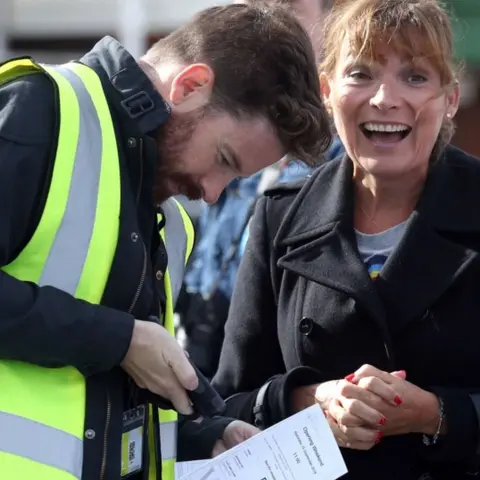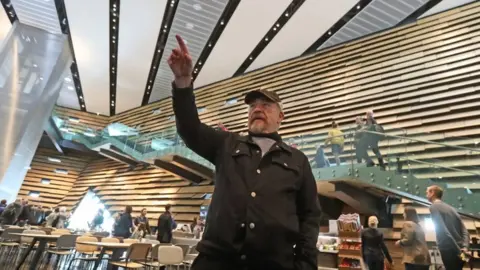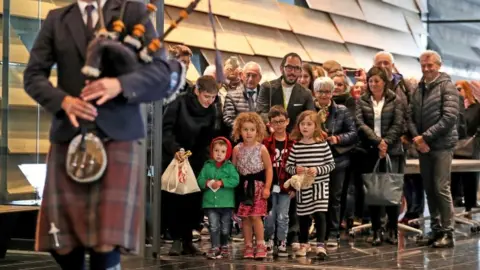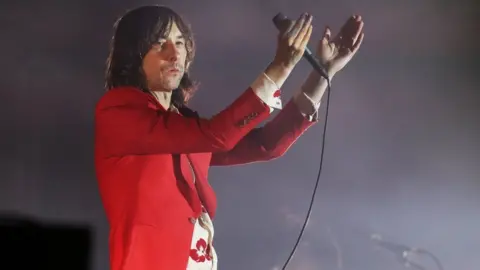V&A Dundee opens its doors to the world
Dundee's V&A Museum of Design has officially opened to the public.
Young people from mentoring charity Breakthrough were among the first visitors to the museum.
The £80.1m building, which was designed by Japanese architect Kengo Kuma, is expected to attract 500,000 visitors in its opening year.
Entry to the museum on its opening weekend is only available to 6,000 winners of a free ticket ballot, with general admission from Monday.
The first visitors included Lorraine Groves from Liverpool, who said: "I'm delighted about how it's engaging with the Waterfront, so it's a good combination of waterfront and city.
"It's really outward looking and the design of the building is really imaginative."
 PA
PA PA
PA
Susan Morton from Stirling said she thought the building was "stunning."
She said: "I love the organic quality of the architecture and the atmosphere inside this building.
"It's not intimidating at all, it's really lovely."
 PA
PA PA
PADundee-born Hollywood actor Brian Cox and television presenter Lorraine Kelly also visited the museum.
A small demonstration by anti-poverty protesters took place across from V&A Dundee as the first visitors queued outside.
Primal Scream headlined the 3D Festival beside the museum on Friday night to officially mark its launch.
The band were joined on the bill by singer-songwriters Lewis Capaldi and Tallia Storm and Dundee's own Be Charlotte
About 2,000 local children and community group representatives visited the museum on Friday, as well as First Minister Nicola Sturgeon.
She described the museum as "world class" and said she was "overawed" after touring it.
She added: "This puts Dundee on the cultural map of the world. People will come from all over the world to see the V&A here."
The museum is the first V&A anywhere in the world outside of London and its temporary exhibition space is the largest in Scotland.
 PA
PAV&A Dundee's Scottish Design Galleries' 300 objects include a 15th Century book of illuminated manuscripts and a Jacobite garter.
The galleries also include furniture, textiles, fashion, architecture, engineering and digital design, and are based on the upper floor of the museum.
The galleries' centrepiece is the restored Charles Rennie Mackintosh Oak Room, which has not been seen publicly for almost 50 years.
